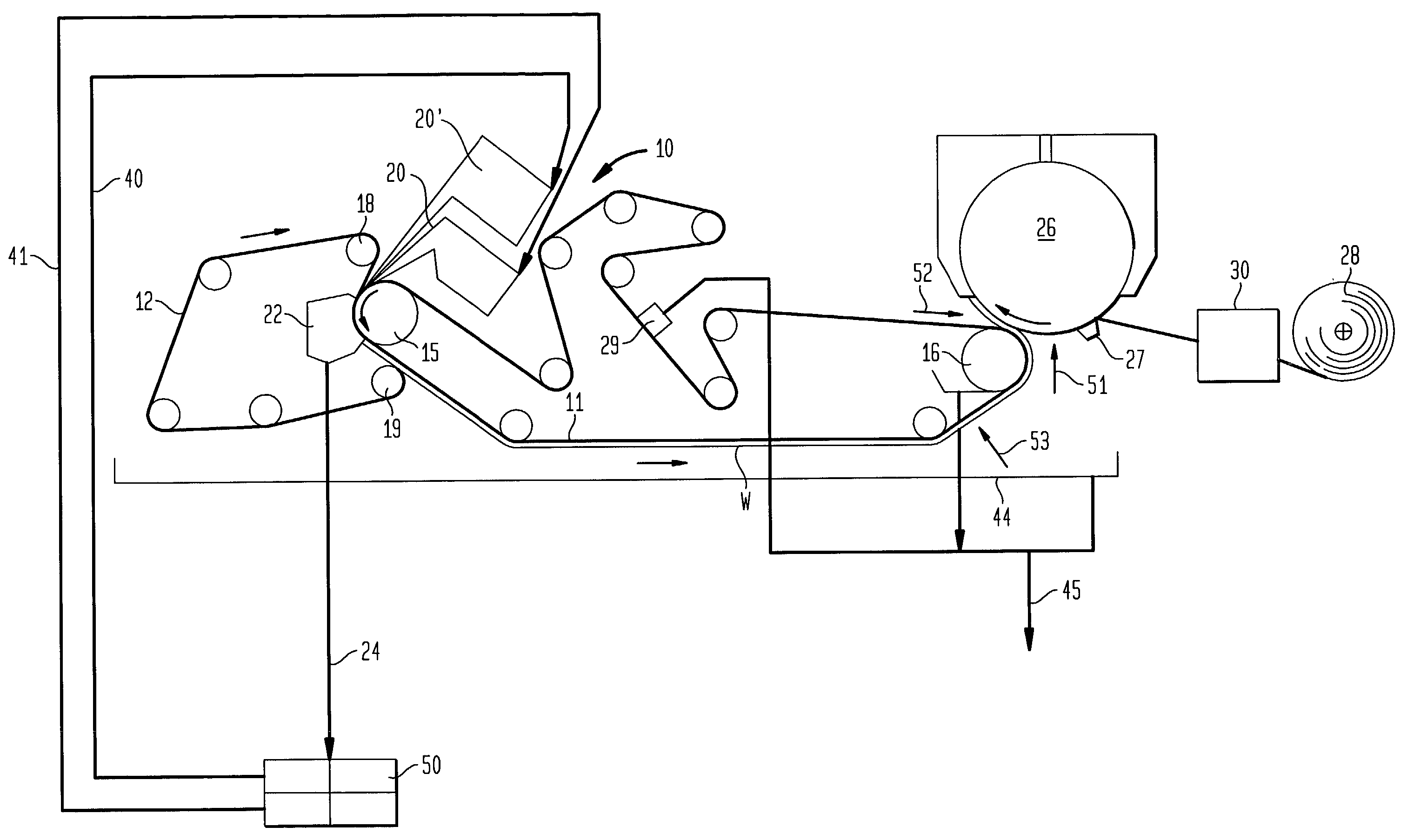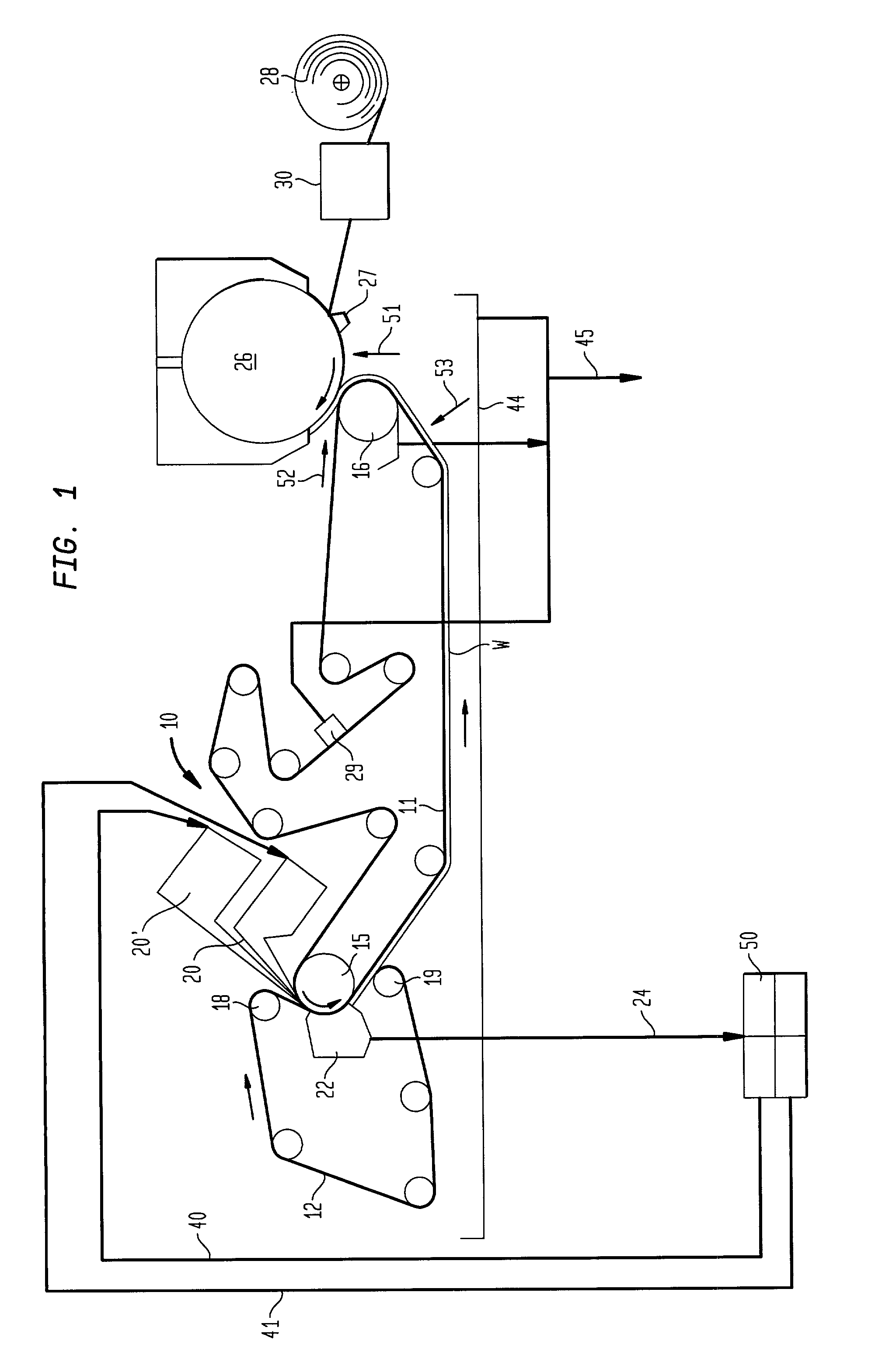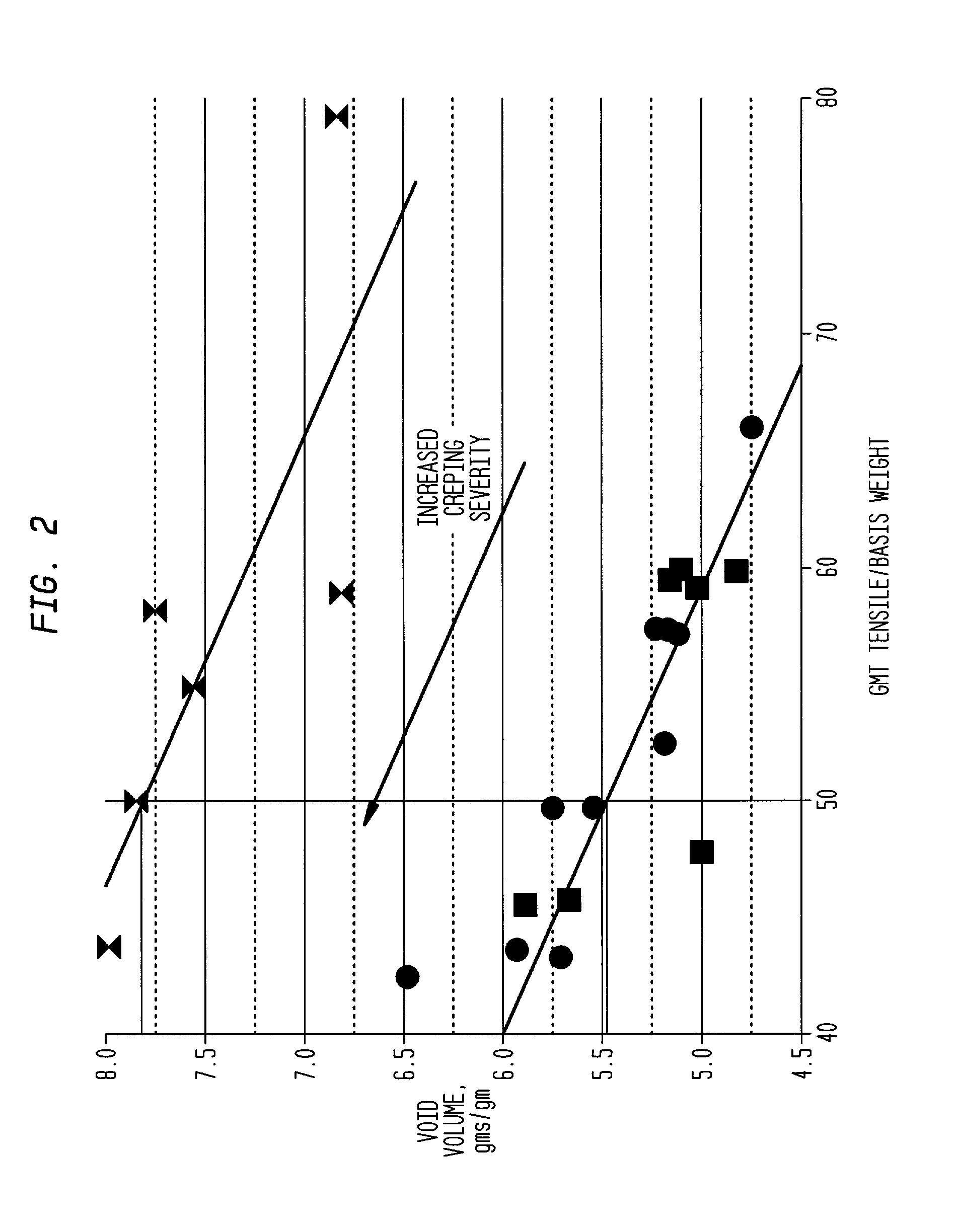Wet crepe, impingement-air dry process for making absorbent sheet
a technology of absorbent sheet and impingement air, which is applied in the direction of drying, non-fibrous pulp addition, light and heating apparatus, etc., can solve the problems of difficult web practice, wet crepe, throughair dry process not meeting substantial commercial success, etc., and achieves low permeability and greater manufacturing flexibility.
- Summary
- Abstract
- Description
- Claims
- Application Information
AI Technical Summary
Benefits of technology
Problems solved by technology
Method used
Image
Examples
example 2
[0087] Example 2
[0088] A web was produced as described in Example 1 of the same fibers and furnish, except that the hoods were cooled down to reduce the dryness of the sheet at the creping blade. A nascent web was deposited on a pressing felt and pressed to a solids content of 44%, prior to being adhered to a Yankee dryer. The web was creped from the Yankee dryer at a solids content of 55% and a blade bevel of 15.degree.. The web was subsequently pulled out using a pair of calender with rolls very lightly nipped with a resulting crepe of 15% left in the sheet. Percent crepe was calculated as:
Yankee Speed--Calender Speed Yankee speed
[0089] The sheet was then collected and dried to a solids content of about 95% while held in restraint by sheet restraining / drying racks at room temperature. This restrained drying technique was used determine a characteristic void volume which is set forth in Table 1. Multiple fabric can drying could also be used by might not exhibit such a dramatic effe...
example 3
[0090] Example 3
[0091] A web was produced as in Example 2, except that the creping was carried out using a 10.degree. bevel blade.
example 4
[0092] Example 4
[0093] A web was produced as in Example 2, except that the creping was carried out using a 0.degree. bevel blade.
[0094] The above examples establish that this process responds much like a normal dry creping process, but the low internal cohesion of the fibers in the web due to its wetness amplify the creping effects.
[0095] It was quite surprising that the coating on the Yankee surface never changed through out the above examples. Similar processes carried out on a cooler Yankee resulted in significant changes in the coating on the Yankee making the coating difficult to establish and to maintain.
[0096] In the process according to the present invention, the amount of wear observed on the creping blade was significantly reduced below that which one would expect from a wet crepe process. By way of illustrative example, crepe blades used in wet creping processes would often be worn out in as little as 30 minutes, while the creping blade in the process according to the pre...
PUM
| Property | Measurement | Unit |
|---|---|---|
| Fraction | aaaaa | aaaaa |
| Fraction | aaaaa | aaaaa |
| Fraction | aaaaa | aaaaa |
Abstract
Description
Claims
Application Information
 Login to View More
Login to View More - R&D
- Intellectual Property
- Life Sciences
- Materials
- Tech Scout
- Unparalleled Data Quality
- Higher Quality Content
- 60% Fewer Hallucinations
Browse by: Latest US Patents, China's latest patents, Technical Efficacy Thesaurus, Application Domain, Technology Topic, Popular Technical Reports.
© 2025 PatSnap. All rights reserved.Legal|Privacy policy|Modern Slavery Act Transparency Statement|Sitemap|About US| Contact US: help@patsnap.com



